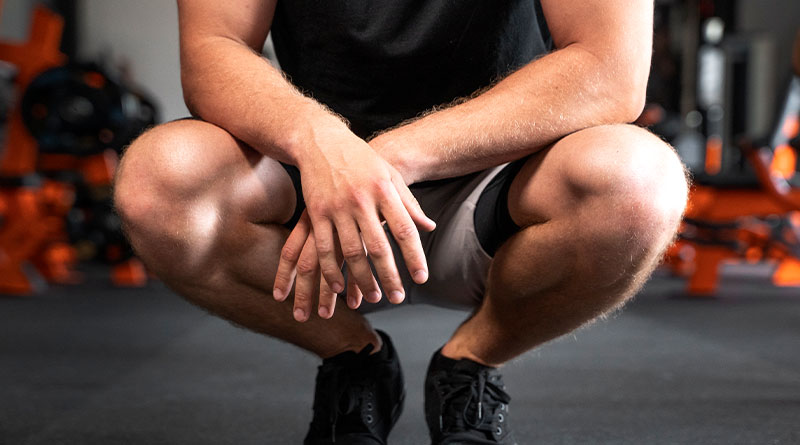In the realm of myths and misconceptions about racial differences, one persistent notion that has circulated for years is the idea that black people possess an extra muscle. This belief, rooted in stereotypes and misinformation, has gained traction in certain circles.
However, it is essential to approach such claims with a critical mindset, delving into the science behind them to separate fact from fiction.
Understanding Skeletal Muscle
To address the purported “extra muscle” in black individuals, we first need to understand the basics of skeletal muscle. Skeletal muscles are responsible for voluntary movements, such as walking, talking, and gesturing.
They are composed of muscle fibers, and genetic factors largely determine the distribution and density of these fibers.
Debunking the Myth
1. Genetic Diversity
It’s crucial to recognize that the human genome is remarkably diverse, and there is no singular “black gene” responsible for an extra muscle. Genetic diversity exists within all populations, and variations in muscle composition are not exclusive to any particular racial or ethnic group.
2. Adaptations to Environment
Human evolution has led to various adaptations based on environmental factors such as climate, terrain, and lifestyle. However, these adaptations are not synonymous with the development of an additional muscle.
Instead, they often involve changes in skeletal structure, metabolism, or other physiological aspects that enhance survival in specific environments.
3. Scientific Consensus
The scientific community overwhelmingly rejects the notion of an extra muscle in black individuals. Rigorous studies and research on human anatomy and genetics consistently demonstrate that there is no physiological basis for such a claim.
Peer-reviewed journals and reputable scientific institutions do not support or endorse theories that suggest racial groups have fundamentally different muscular structures.
It is crucial to rely on evidence-based information and trust the collective expertise of the scientific community when examining claims that lack empirical support.
Role of Genetics and Environment
Muscle Fiber Types
Skeletal muscles consist of different fiber types, primarily classified as slow-twitch (Type I) and fast-twitch (Type II). Genetics play a significant role in determining an individual’s muscle fiber composition.
While there may be some variations among populations, it is essential to avoid generalizations that oversimplify the complexity of genetic influences.
Environmental Factors
Environmental factors, including physical activity, diet, and lifestyle, can influence muscle development. It is inappropriate to attribute these variations solely to race without considering the impact of individual choices and environmental conditions.
Individual Variability
The role of genetics and environment in muscle development varies widely among individuals, irrespective of their racial or ethnic background. Within any given population, there is a broad spectrum of genetic diversity and lifestyle choices further contribute to the unique characteristics of each person’s musculature.
Recognizing this individual variability is crucial to understanding that generalizations about an entire racial or ethnic group oversimplify the intricate interplay between genetics and environment.
Adaptation to Physical Activity
The human body adapts to the demands placed upon it, particularly in response to physical activity. While certain populations may engage in activities that emphasize specific muscle groups, this adaptation is a result of lifestyle and not an inherent “extra muscle” based on race.
It is essential to acknowledge that individuals within any group can pursue diverse physical activities that influence their muscle development differently.
Long-Term Evolutionary Processes
Throughout human evolution, populations have adapted to various environments and lifestyles. However, attributing these adaptations to the presence of an extra muscle oversimplifies the intricate evolutionary processes.
Evolutionary changes occur over extended periods and involve complex interactions between genetic mutations and environmental pressures.
It is inaccurate to reduce these intricate processes to a simplistic notion of an extra muscle based on racial categories.
Addressing Health Disparities
- Socioeconomic FactorsRather than focusing on unsubstantiated claims of an extra muscle, it is more productive to address the broader issue of health disparities. Socioeconomic factors, access to healthcare, and systemic inequalities contribute significantly to health disparities among different racial and ethnic groups.
- Promoting InclusivityInstead of perpetuating myths that create divisions, efforts should be directed toward promoting inclusivity, understanding, and equal opportunities for everyone, regardless of their racial or ethnic background.
FAQs
Q1: Is there any scientific evidence supporting the existence of an extra muscle in black individuals?
Ans: No, there is no credible scientific evidence supporting the claim of an extra muscle in black people. The idea lacks empirical basis and has been debunked by numerous studies and experts in anatomy, genetics, and physiology.
Q2: Do African people have an extra muscle in their leg?
Ans: No, there is no scientific evidence to support the idea that African people, or any specific racial or ethnic group, have an extra muscle in their leg.
The composition of muscles in individuals is determined by a combination of genetic factors, environmental influences, and lifestyle choices. It is essential to approach such claims with skepticism and rely on credible scientific information.
Q3: Do men have extra muscle?
Ans: While there are general differences in muscle mass between men and women, it is not accurate to say that men have an “extra” muscle. Men typically have higher levels of testosterone, a hormone that contributes to muscle development.
However, the distribution and composition of muscles vary among individuals, and factors such as genetics, physical activity, and overall health also play crucial roles in determining muscle mass.
Q4: What is the psoas major muscle?
Ans: The psoas major muscle, commonly referred to as the psoas muscle, is a major muscle of the human body. It is located on both sides of the spine, running from the lower spine (vertebrae) through the pelvis and attaching to the femur (thigh bone).
The psoas muscle is essential for hip flexion and plays a crucial role in stabilizing the spine and maintaining proper posture. It is often involved in activities such as walking, running, and sitting.
While the psoas muscle is significant for overall mobility, it is not unique to any specific racial or gender group.
Conclusion
In conclusion, the idea that black people have extra muscle is a baseless myth that perpetuates harmful stereotypes. The differences in muscle composition among individuals are complex and influenced by a combination of genetic, environmental, and lifestyle factors.
It is essential to approach such claims with skepticism and prioritize scientific understanding over unfounded beliefs. By debunking these myths, we can foster a more inclusive and informed society that celebrates diversity without resorting to divisive and inaccurate narratives.
Remember, the strength of humanity lies in unity and shared understanding.
Sahil Sachdeva is the Founder of curemedoc.com and a Digital Marketing professional with 6+ years of experience. If you need help in Content writing and want to increase your website ranking, connect with him, as he has some premium websites where you can share blogs with DoFollow links and increase your website’s ranking on Google.





